Tteokguk (떡국) is a Korean rice cake soup made of sliced rice cakes in a savory beef broth that's garnished with eggs, gim (seaweed), and green onions. It's a traditional soup eaten during Korean New Year, called Seollal (설날), to mark gaining another year and good fortune.
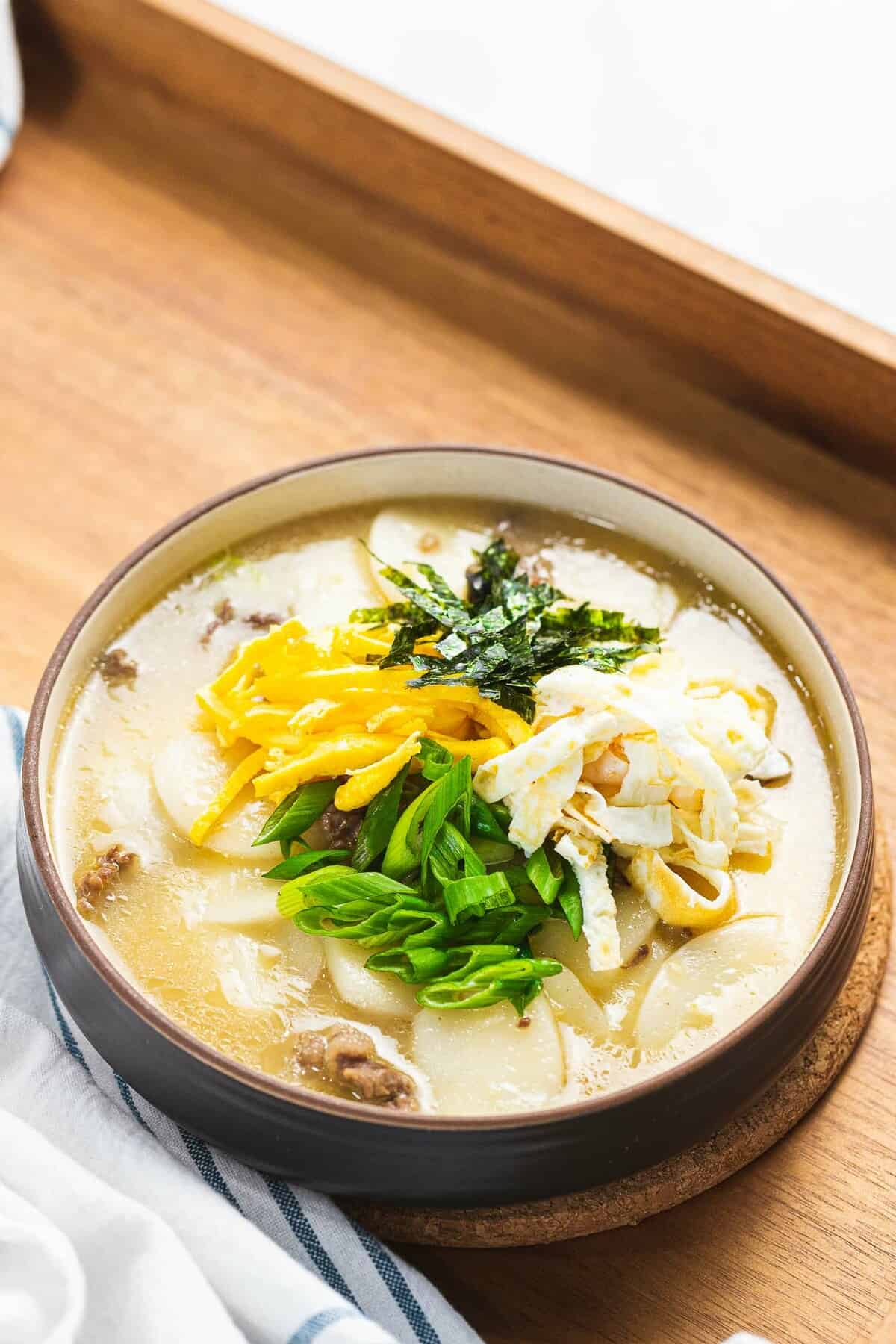
Tteokguk (떡국) is a Korean rice cake soup made of sliced rice cakes, beef, and beef broth. It's garnished with thinly sliced eggs, green onions, gim (Korean seaweed), and toasted sesame oil.
Tteokguk literally translates to rice cake soup in Korean. 'Tteok' (떡) means rice cake and 'guk' (국) means soup. Tteokguk can also be spelled 'dduk guk', 'duk guk', or 'deok guk'.
Traditionally, it takes over an hour to make this soup because beef brisket is boiled until soft and tender, but this quick and easy version is ready in only 15 minutes and has all the traditional flavors!
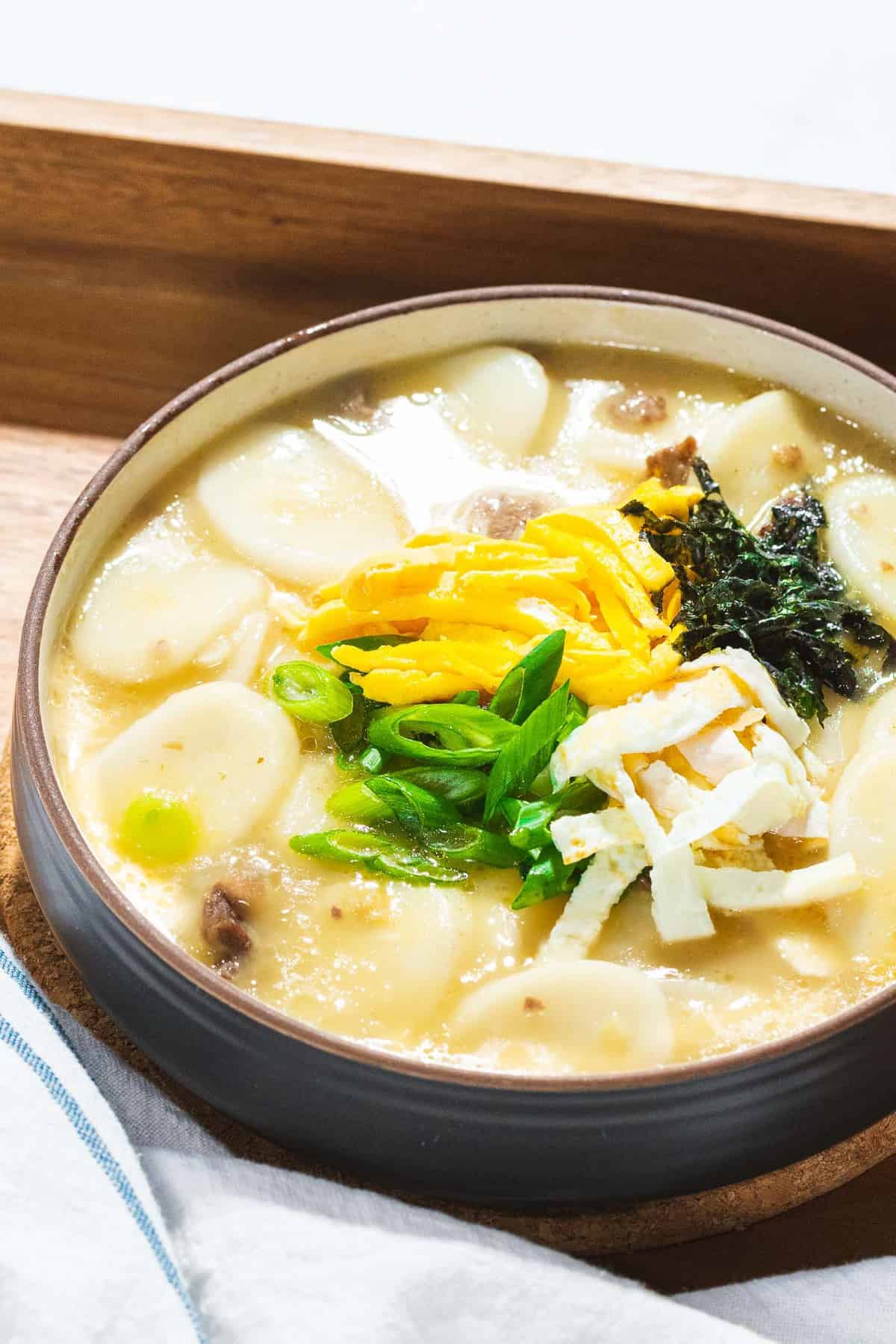
What is tteokguk (떡국)?
Tteokguk is a comforting Korean rice cake soup made with thinly sliced rice cakes, beef brisket, beef broth, and occasionally mandu (Korean dumplings). It's garnished with thin strips of egg yolks and egg white (called jidan 지단), green onions, and gim (Korean seaweed). Lightly drizzle toasted sesame oil right before serving.
Tteokguk for Korean New Year (설날)
Korean New Year is called Seollal (설날) and marks the first day of the lunar calendar. It's a huge celebration in Korean culture that spans three days of family gatherings, including the day of, day before, and day after.
Eating tteokguk is a popular tradition on this day because it symbolizes getting a year older in Korean culture and its coin-like shape is thought to bring good fortune, prosperity, and wealth for that year. The white color of the rice cakes also symbolizes purity, new beginnings, and cleanliness.
A common custom is to say "you're now a year older" after eating a bowl of tteokguk on New Year's Day. These days it's eaten all throughout the year, and even on Western New Year's Day.

Ingredients
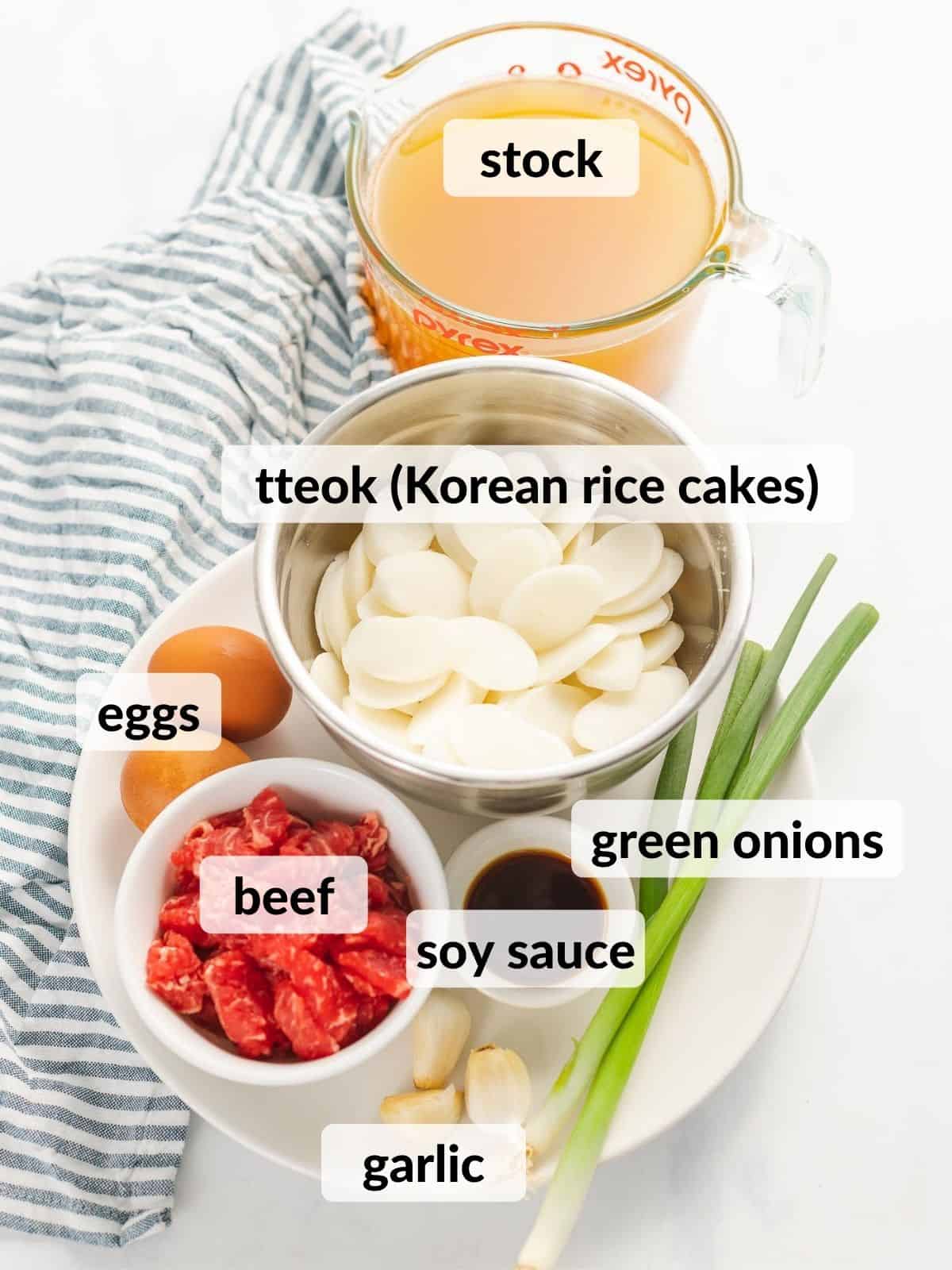
Tteok (Korean rice cakes) - Look for thinly sliced rice cakes in an oval shape. This type of tteok is different from the long cylinder shapes used in tteokbokki. You can find it in Korean grocery stores or Asian stores in the refrigerated or frozen aisle. If frozen, soak in cold water until they separate and thaw, about 10 minutes.
Beef - Use any cut of thinly sliced beef for quick cooking. I used thinly sliced rib-eye cut into bite-sized pieces for a rich flavor.
Stock or broth - I used chicken broth but you can use dashi, anchovy stock, or any clear light-colored stock or broth.
Toppings - Eggs, green onions, gim (Korean seaweed), and mandu (Korean dumplings).
Instructions
- Rinse and soak the tteok (rice cakes) in water while prepping the other ingredients. This makes for faster cooking time. If frozen, soak for about 10 minutes to thaw.
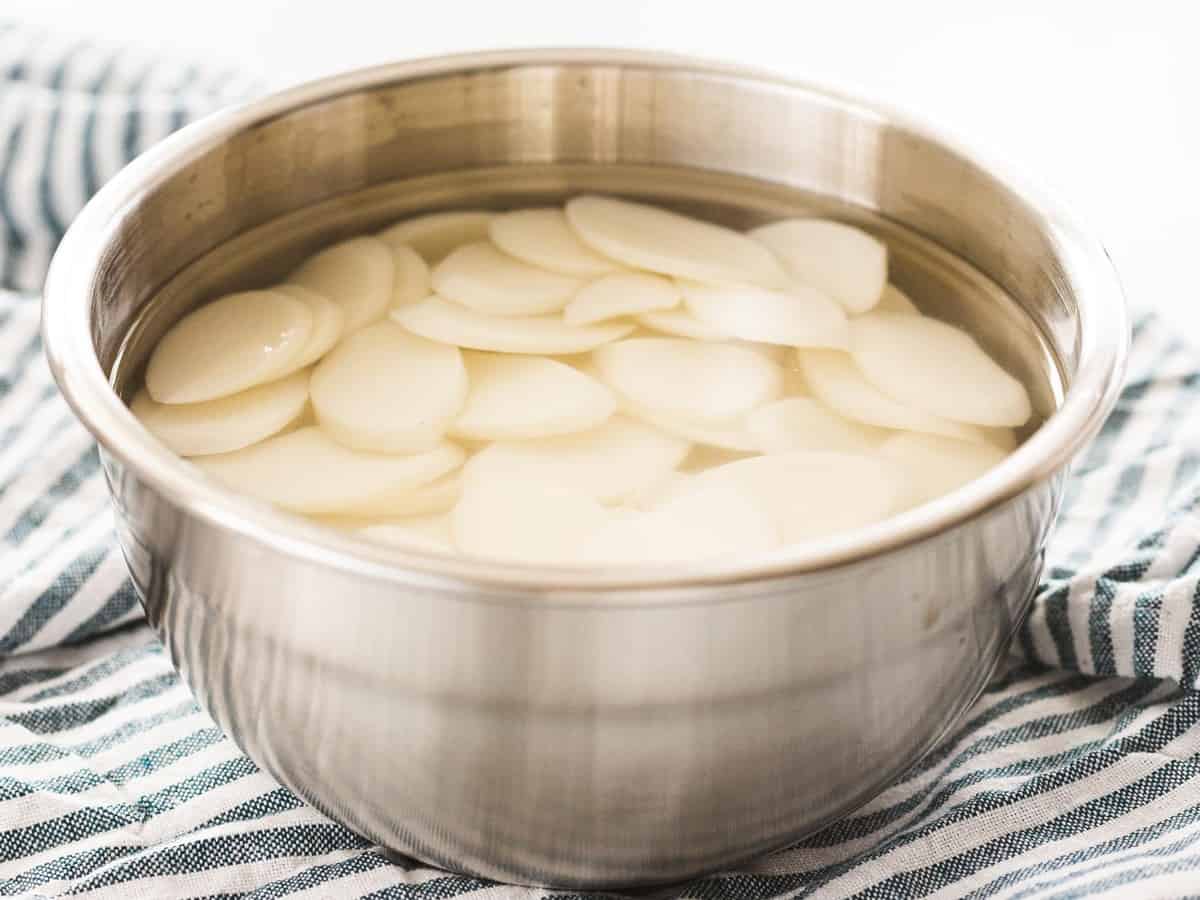
- Cook the egg whites and egg yolks separately in a pan and cut them into thin strips. This technique is called jidan in Korea. Set aside.
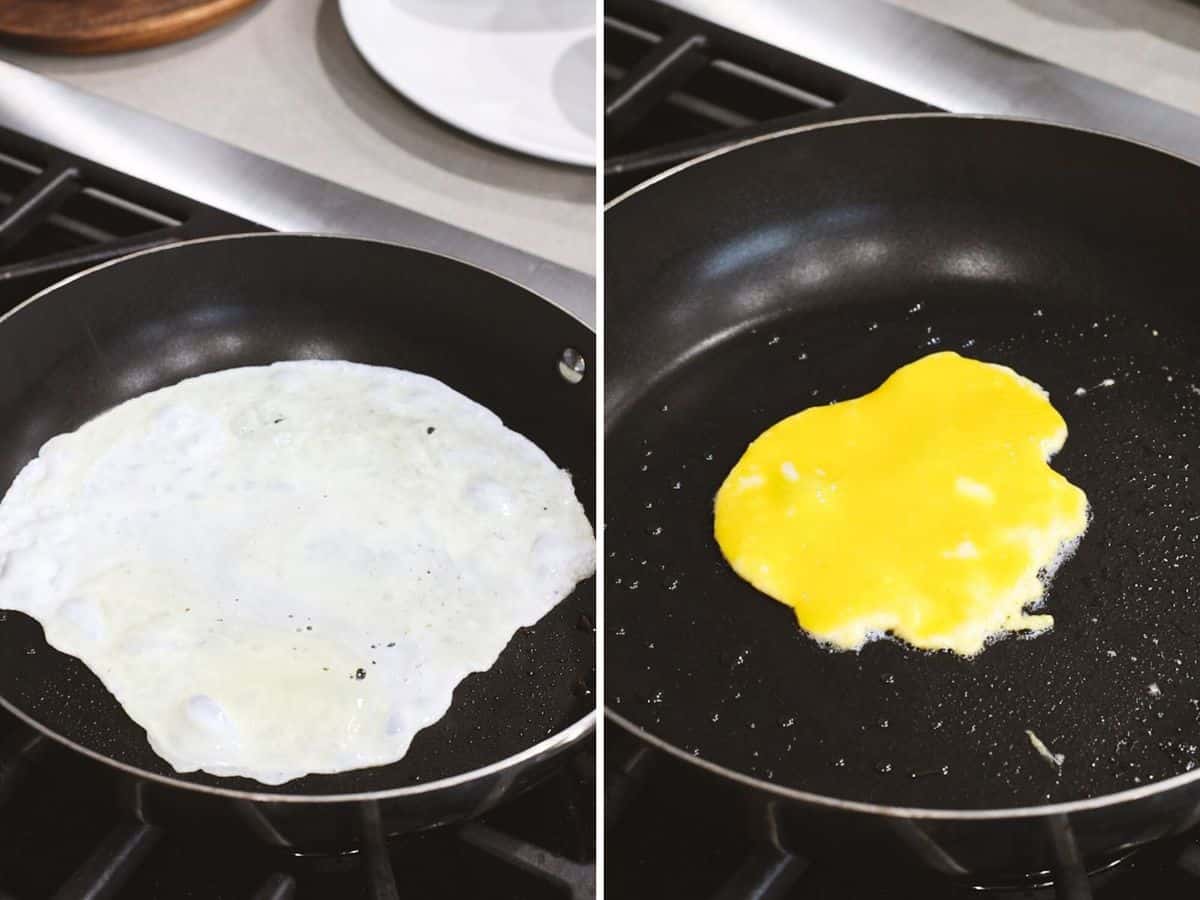
- Sauté the beef with garlic and oil until fully cooked. Then add the drained rice cakes. Add mandu at this time, if using.
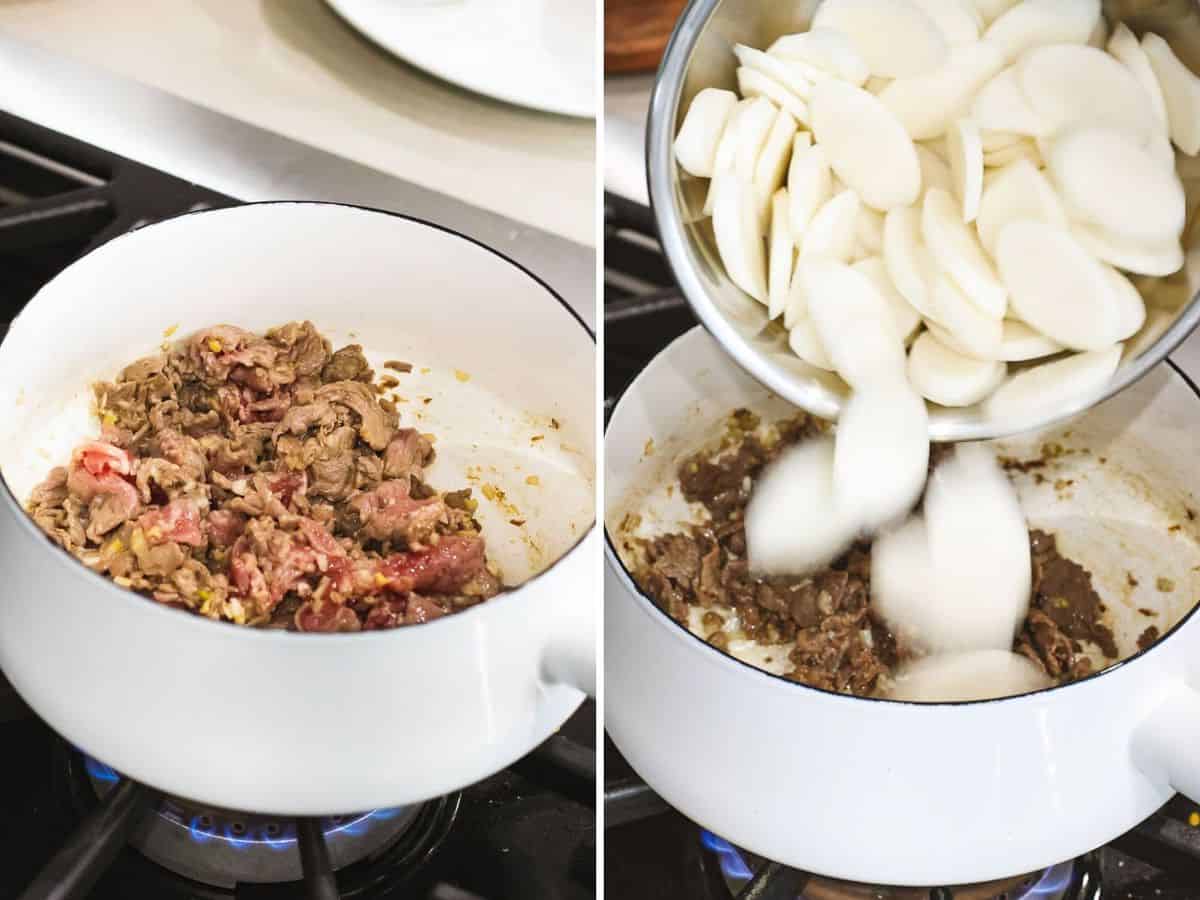
- Add your broth or stock and bring to a boil. Skim off any scum and cook for 5 minutes or until the rice cakes are soft and tender. The broth should thicken up as the starch gets released from the rice cakes. Season with soy sauce, salt, and pepper to taste. Next, add the chopped green onions.
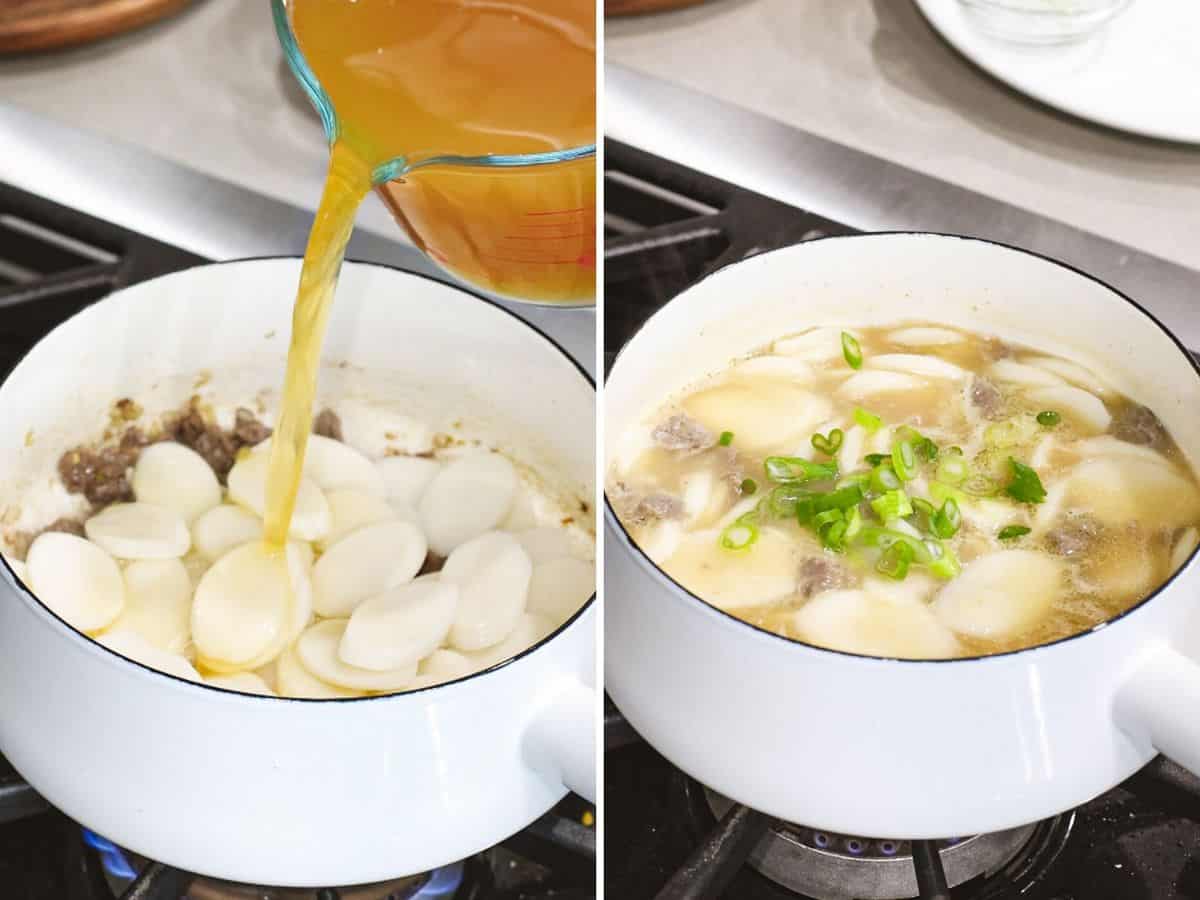
- Garnish the tteokguk with thinly sliced egg yolks and egg whites, crushed or thinly cut gim, and more green onions. Drizzle with toasted sesame oil and serve!
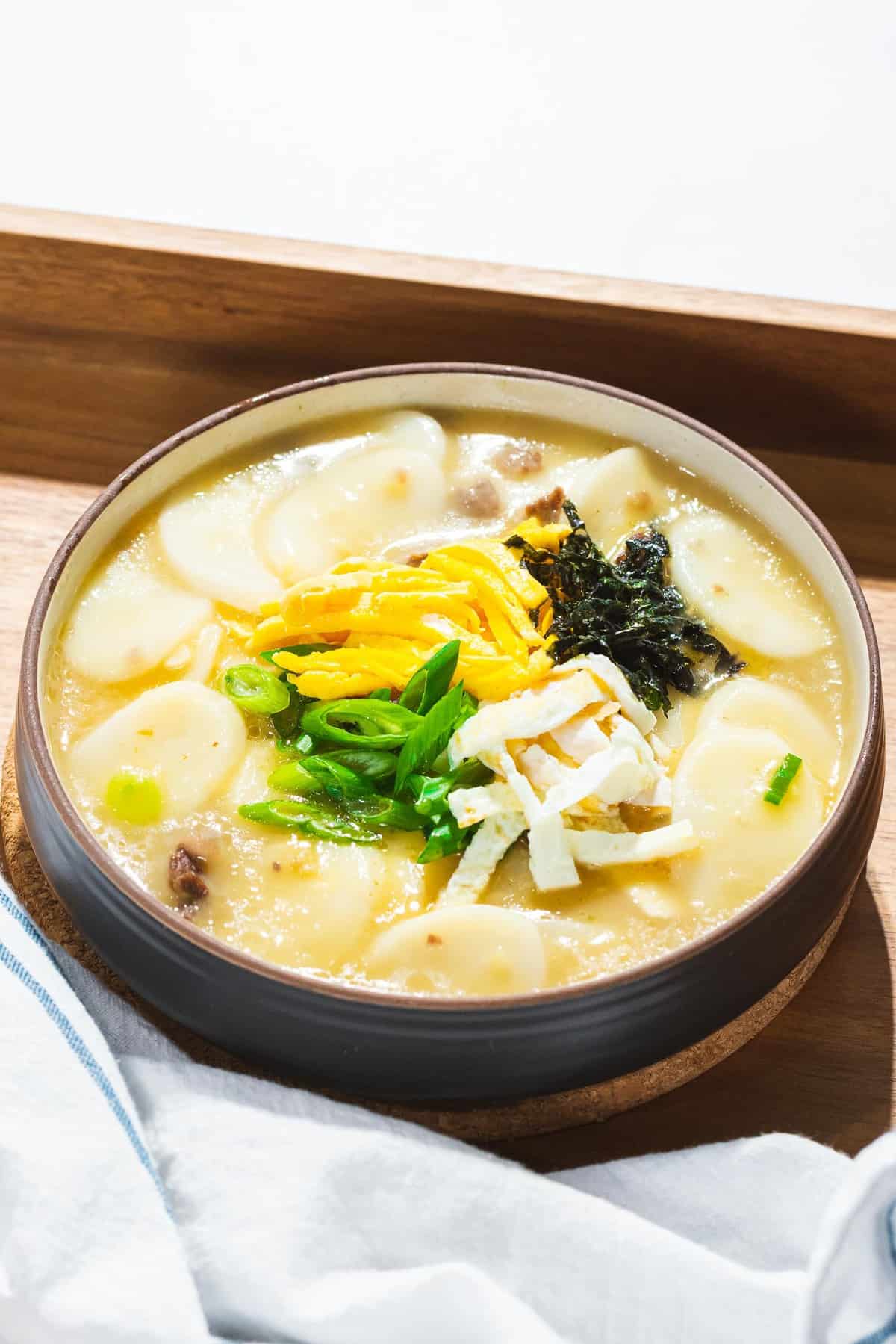
Variations
Vegetarian tteokguk - For a vegetarian version, use a vegetable broth or vegetarian dashi, and instead of beef use mushrooms and firm tofu cut into bite-sized pieces.
Tteok mandu guk - Tteokguk can also include mandu or Korean dumplings. Use any mandu you'd like. Both fresh or frozen mandu work well.
Morea Korean recipes:
Recipe
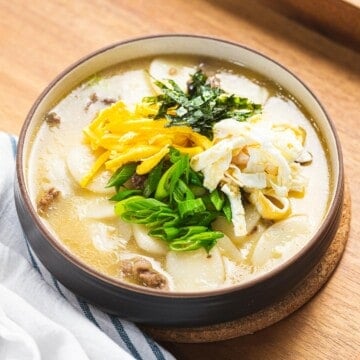
Easy Tteokguk (Korean Rice Cake Soup)
☑ Ingredients
Tteokguk base
- 2½ cups Korean rice cakes - about ⅔ lb
- 3½ cups broth - anchovy, dashi, or chicken broth; See Note 1
- 1 cup sliced beef - bite-sized pieces; See Note 2
- 3 cloves garlic - minced
- 1 Tablespoon vegetable oil
- 2 teaspoons low sodium soy sauce
- salt and pepper - to taste
Tteokguk toppings
- 2 eggs - whites and yolks separated
- 2 stalks green onions - chopped
- 1 teaspoon toasted sesame oil
- gim (roasted seaweed) - crushed or cut into strips
- mandu (Korean dumplings) - (optional) fresh or frozen
Instructions
- Prep: Rinse and soak the rice cakes in a bowl of water while prepping the other ingredients. This helps with faster cooking. Cook the egg whites and egg yolks separately in a pan and cut them into thin strips.2½ cups Korean rice cakes, 2 eggs
- Cook beef: Heat a large pot over medium-high heat and sauté the beef with garlic and vegetable oil until fully cooked.1 cup sliced beef, 1 Tablespoon vegetable oil, 3 cloves garlic
- Add stock and rice cakes: Next, add the drained rice cakes, stock, and mandu (if using) and boil until rice cakes are soft and tender and mandu is fully cooked, about 5 to 7 minutes. Skim off any scum and season with soy sauce and add salt and pepper to taste.3½ cups broth, 2 teaspoons low sodium soy sauce
- Add toppings: Garnish with eggs, green onions, gim (roasted seaweed), and toasted sesame oil. Serve and enjoy!2 stalks green onions, 1 teaspoon toasted sesame oil
✎ Recipe Notes
- Broth - Traditionally beef brisket is boiled in water until tender to create a beef brisket broth. For this quick and easy version, use any kind of clear broth you have.
- Beef - Traditionally beef brisket is cooked and shredded, but for this easy version you can use any kind of thinly sliced beef such as ribeye, beef chuck, bottom round, or sirloin. Ground beef is another great option.
- Tteok (Korean rice cakes) - You can find tteok in Korean or Asian grocery stores in the refrigerated or frozen aisle. They come vacuum-packed or sealed in air tight bags. Freshly made tteok can also be used.
Nutrition
*Nutritional information is an estimate, calculated using online tools.
Tteokguk symbolizes getting a year older in Korean culture and is thought to bring good fortune for that year. It's typically eaten on the morning of Korean New Year's Day, called Seollal (설날), but it's eaten all throughout the year these days.
Yes! Simply thaw by soaking in water for about 10 minutes before cooking. It should easily separate and thaw since they're thinly sliced.
You can find them in the refrigerated or frozen section of any Korean grocery store. They usually come vacuum-sealed or wrapped in an airtight bag.


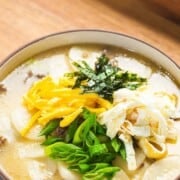



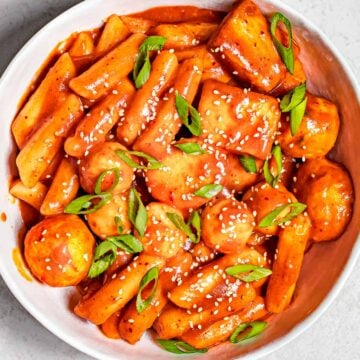

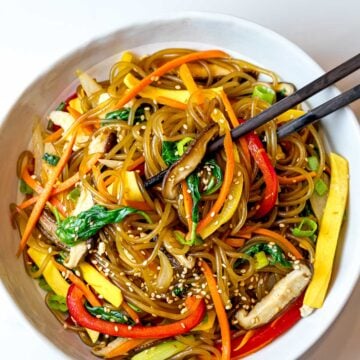
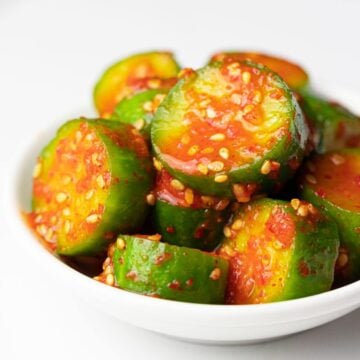
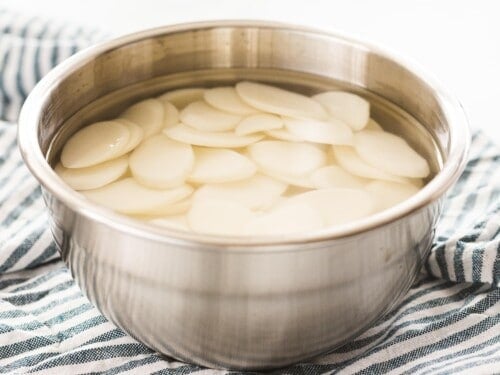
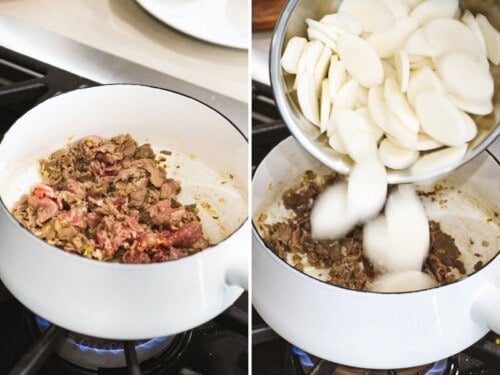
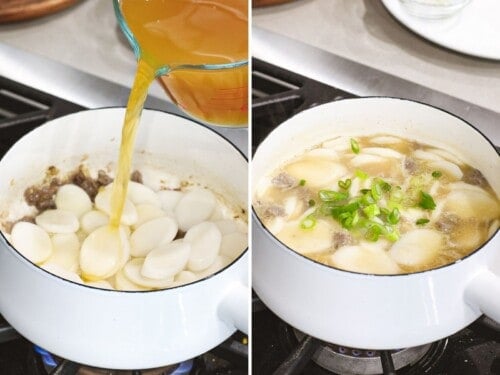
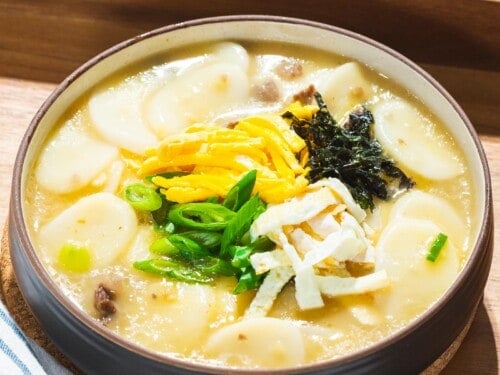
Leave a Comment